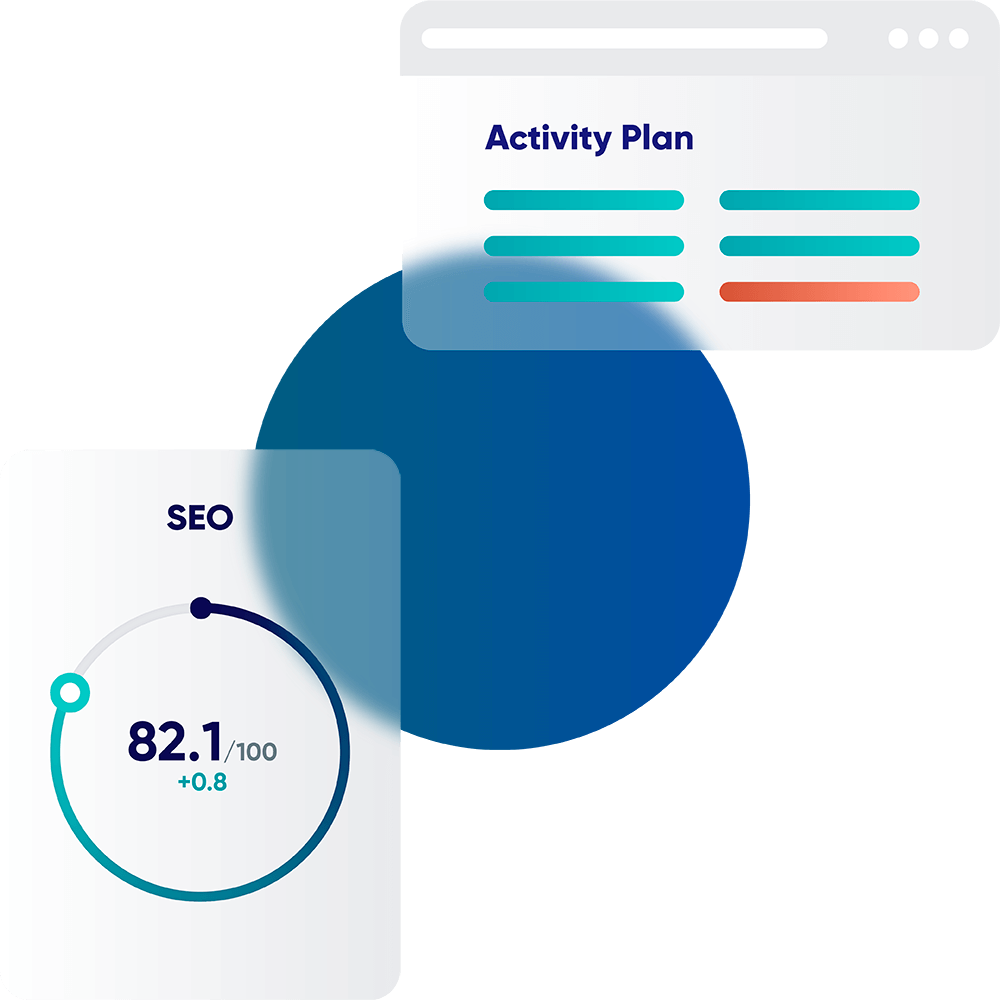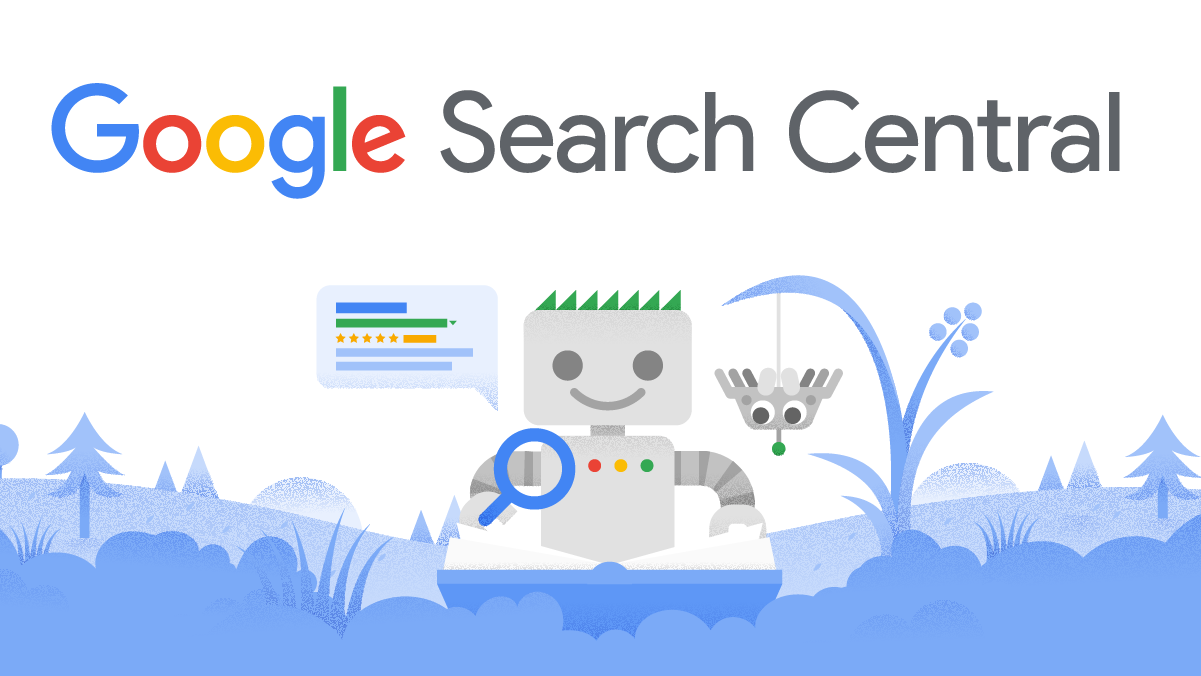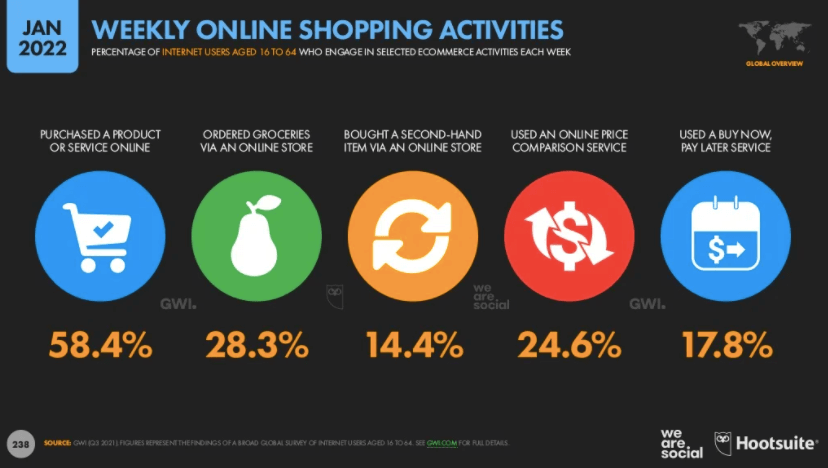Should the greater focus of your SEO efforts go towards creating new content or updating existing content?
In my opinion, you should dedicate about half of your SEO efforts to updating old content, and the other half to creating new content.
Webpages build value over time
Contents
- 1 Webpages build value over time
- 2 What Google says
- 3 What to do? A content audit
- 4 Grow and maintain your content
- 5 Is content writing part of SEO?
- 6 How do you grow your SEO traffic by updating your old content?
- 7 What is a unique constraint explain with an example?
- 8 Why should content be unique?
- 9 Why should I continue SEO once I’ve gotten good rankings?
The content of your website may remain relevant for many years to come.
Pages that have been published for some time have presumably built links and visibility. It creates a lot of page value.
This means that these pages may still appear in the search results for the queries your target audience uses today.
Freshness is generally less of an issue for the assessment of page quality. “Old” pages may have high page quality ratings. “
Older content may still be relevant and considered high quality.
Think: An information page about the American Civil War.
However, other types of old content can only remain relevant if the material is considered “evergreen” and updated.
Over time, any given site can have hundreds or thousands of outdated web pages.
Google may not trust a site where two-thirds of the pages are e.g. three years old or older and have outdated information on them. Especially if these topics are being updated by your competitors.
You can do a quick check on your older content and see for yourself. When you published the page years ago, did it rank on page 1 of the search results? And is it on page 2 or lower now?
Usually, an update of the content can bring it back to page 1.
Lately, I’ve been asked about the value of a web page – especially how to display value as an asset. Normal things are depreciated over time and I think that happens with web pages. If they are not maintained, they eventually rot and become unusable. But well-maintained, they remain an asset.
If a web page is designed and researched, sketched and written, edited and optimized – and engagement objects such as images and video are added – it can take eight hours for quality work. That time has a significant cost.
You can ignore it and essentially write it off, or you can keep it fresh. We prefer the latter as a content strategy and tactic.
What Google says

Google says you need to spend time maintaining your site to ensure quality:
… Unmaintained / abandoned “old” sites or unmaintained and inaccurate / misleading content is one reason for a low page quality rating.
In an “office hours” session in 2019, Google’s John Mueller talked about evergreen versus fresh content:
… We try to find a balance between a form of showing evergreen content that has existed and a kind of seeing more as reference content and a kind of fresher content, and especially when we can see that people are looking for the fresher content.
You can listen to the answer here:
Mueller probably refers to the concept of “query deserves freshness” – the kind of search queries whose results should reflect new content. You can read more about it in a 2011 Google blog post here.
In another 2021 Office Hours video, Mueller addressed how to handle old content:
… If it’s something you think is good content that you want to publish with your site, with your name, then I would keep it. Just because it’s old does not mean it’s bad. But if you look at it and you say, oh, it’s embarrassing to me now, I do not want it to be online. It’s just so bad. Then it’s something I want to say to either improve it or eliminate it. “
You can listen to the answer here:
What to do? A content audit

In addition to creating new web pages for your SEO program, a web content review will be the key to prioritizing how to update old pages.
A content review identifies weak and underperforming content on your site so you can improve it.
By using Google Analytics and a tool like Screaming Frog, Semrush or our SEOToolSet, you can get all the data you need to understand the web pages of your site.
Once you have gathered the necessary data, you will divide your web pages into three categories. Those:
Grow and maintain your content

The beauty of SEO is that your web pages build value over time through visibility and links. So all the hard work you put into them can continue to pay off in traffic and hopefully revenue.
But you need to maintain your site throughout its life cycle.
So to strengthen your SEO program, be sure to spend 50% of your content-focused time creating new web pages and 50% of the time updating the old ones.
As a final encouragement… Your website may already have hundreds or even thousands of outdated pages and it can be a big project to get it under control.
Build updates into a regular schedule, just like you do with creating new content.
Get into a rhythm of identifying existing pages related to each new page, and either updating or consolidating them as part of your content creation process.
Opinions expressed in this article are those of the guest author and not necessarily Search Engine Land. Staff authors are listed here.
Bruce Clay is the founder and president of Bruce Clay Inc., a global digital marketing optimization firm that provides search engine optimization, PPC management, paid social media marketing, SEO-friendly website architecture, content development and SEO tools and training. & #xD;
Is content writing part of SEO?

Clay authored the book “Search Engine Optimization All-In-One For Dummies,” now in its fourth edition, and “Content Marketing Strategies for Professionals.” He wrote the first web analytics tool, created Search Engine Relationship Chart® and is credited with being the first to use the term search engine optimization. Bruce Clay’s famous SEO course is available online at SEOtraining.com.
Yes it does. Both SEO content writing and copywriting have to do with the words on the page, but they each serve their separate purpose. And this distinction helps you decide which method you need to achieve the desired results.
Is content part of on page SEO?
Is SEO and Content Writing the Same? The basic difference between an SEO content writer (if you are looking for one) and a normal content writer is that the former knows how to create content, without making it spammy, in order to improve the rankings of your search engines legitimately.
Which of these is a part of onsite SEO?
On-page SEO refers to the SEO elements you control on the web page, or the web page code itself. Examples of on-page SEO include content, headings and headers, image optimization, title tags, meta descriptions, structured data and more.
Does on-page SEO include relevant content?
On-site SEO (also known as on-site SEO) is the practice of optimizing elements of a site (as opposed to links elsewhere on the Internet and other external signals collectively known as “off-site SEO”) in order to rank higher and earn more relevant traffic from search engines.
Is content part of SEO?
On-page SEO (also known as on-site SEO) refers to the practice of optimizing web pages to improve a website’s ranking on the search engines and earn organic traffic. In addition to publishing high quality relevant content, on-page SEO includes optimizing your headlines, HTML tags (title, meta and header) and images.
Content SEO is an important part of any SEO strategy. Without content, it is impossible for your site to rank in the search engines. It is therefore crucial to write and structure quality content! This ultimate guide covers the key areas of content SEO.
Is SEO important for content writing?
SEO writing is the process of writing content with the goal of ranking on the first page of search engines like Google. This is achieved by researching relevant keywords and creating optimized content that matches the user’s intent. For example, Google uses “spiders” that review content to see what it’s all about.
Content Writing and SEO Original high quality content must be present for SEO. SEO, despite the absence of quality content, does not help search engine ranking. The content writer must work without focusing on SEO to develop simple, well-worded and user-friendly content. Without content, there is no SEO.
What is a SEO content writer?
SEO refers to the technical process of increasing the quality of traffic and attracting maximum visitors to your website. On the other hand, content marketing is focused on using valuable and relevant content to drive profitable customer or client action. SEO without content marketing is like a body without a soul.
What is SEO content writing examples?
What is an SEO Copywriter? An SEO copywriter is someone who can look at a set of keywords, find out what a person searching for those phrases will know, and write it clearly and concisely. A good SEO writer must also be able to use keywords effectively to help the reader find their content in search engines.
- SEO Content Writing – 10 Simple Tips (Plus Examples)
- Write enticing page titles and descriptions.
- Use headings and subheadings.
- Use appropriate keyword density (and LSI keywords)
- Use internal and external links.
- Answer User Search Intent.
- Use a simple URL.
- Use bulleted lists.
What is SEO writing?
Include a call to action.
How do you grow your SEO traffic by updating your old content?
SEO writing is the process of writing content to rank on the first page of search engines like Google. This involves researching keywords, writing high quality content that matches the user’s intent, and optimizing your headlines for easy page crawling.
- 25 Ways to Update Old Blog Posts for SEO
- Consolidate content with mid-performance.
- Add the current year to your title tag.
- Update meta tags for low CTR keywords.
- Answer “people also ask” questions.
- Improve your search match.
- Add internal links to recent content.
Link to new research studies.
How often does SEO need to be updated?
Does content change affect SEO? If you want to boost your SEO, look no further than updating your old content. This is the perfect way to increase the traffic your site receives from search engines and it is guaranteed to provide a huge improvement in how well your content ranks. To get started, create compelling new content that you can add on top of your old articles.
How often is SEO updated?
According to Jonny Ross Consultancy and other industry experts, it is recommended that you revise your keyword strategy on a quarterly basis and at least 3 – 6 months before any campaign or campaigns.
How long does it take for SEO changes to update?
Most experts estimate that Google changes its search algorithm about 500 to 600 times a year. It is somewhere between once and twice every day. While most of these changes do not significantly change the SEO landscape, some updates are significant and may change the way we write for SEO.
What is a unique constraint explain with an example?
While it is quite accurate to say that there is no definite answer as to how long it takes before you start seeing organic improvements from your SEO efforts, most experts agree that it typically takes four to six months: “Generally, websites can see results in 4 to 6 months.â € â €“ SEO Mechanic.
UNIQUE Constraint prevents two records from having identical values in a column. In the CUSTOMERS table, for example, you may want to prevent two or more people of an identical age.
What is unique constraint example?
What is a unique key example?
Which one has a unique constraint in a data table?
A UNIQUE constraint dictates that a column must not store duplicate values. Let’s look at an example using the Employees table. Each employee must have a unique number; therefore, the EmployeeNumber column implements the UNIQUE constraint.
What is a unique constraint in database?
The UniqueConstraint object, which can be assigned either to a single column or to an array of columns in a DataTable, ensures that all data in the specified column or columns is unique per row. You can create a unique constraint for a column or array of columns using the UniqueConstraint constructor.
What is unique constraint explain?
Unique constraints ensure that the values in a set of columns are unique and not zero for all rows in the table. The columns specified in a unique constraint must be defined as NOT ZERO. Database management uses a unique index to enforce the unique character of the key during changes to the columns in the unique constraint.
What is unique constraint in database?
A unique limitation is the rule that the values of a key are only valid if they are unique. A key that is limited to having unique values is called a unique key. A unique constraint is enforced by using a unique index.
How do you write a unique constraint?
Unique constraints ensure that the values in a set of columns are unique and not zero for all rows in the table. The columns specified in a unique constraint must be defined as NOT ZERO. Database management uses a unique index to enforce the unique character of the key during changes to the columns in the unique constraint.
What is purpose of a unique constraint?
The syntax for creating a unique constraint using an ALTER TABLE statement in SQL Server is: ALTER TABLE table name ADD CONSTRAINT constraint_name UNIQUE (column1, column2, … column_n); table name.
Which one has a unique constraint in a data table?
The unique constraint is a column constraint that is used to secure unique values in the column. It prevents duplicate values from being displayed in a column for two or more rows.
What is unique constraint explain?
The UniqueConstraint object, which can be assigned either to a single column or to an array of columns in a DataTable, ensures that all data in the specified column or columns is unique per row. You can create a unique constraint for a column or array of columns using the UniqueConstraint constructor.
What is purpose of a unique constraint?
A unique limitation is the rule that the values of a key are only valid if they are unique. A key that is limited to having unique values is called a unique key. A unique constraint is enforced by using a unique index.
How do you write a unique constraint?
The unique constraint is a column constraint that is used to secure unique values in the column. It prevents duplicate values from being displayed in a column for two or more rows.
Why should content be unique?
The syntax for creating a unique constraint using an ALTER TABLE statement in SQL Server is: ALTER TABLE table name ADD CONSTRAINT constraint_name UNIQUE (column1, column2, … column_n); table name.
Search engines like unique content because it helps differentiate sites with similar content from each other. This enables search engines to demonstrate their value by offering various high quality results almost instantly.
How can you tell if content is unique?
Why is new content important? The value of new content and consistent user activity Fresh, new content that is informative, engaging and relevant, consistently attracts visitors, while ensuring that they will return the next time a new piece of content becomes available.
How much duplicate content is acceptable?
The fastest way to check and see if your content is original is to take a phrase with text and place it in Google Search. Be sure to “put the content in quotes” to get Google to search for the exact phrase.
What makes a content unique?
How much copied content is acceptable? According to Matt Cutts, 25% to 30% of the web consists of duplicate content. According to him, Google does not consider duplicate content as spam and it does not lead to your site being penalized unless it is intended to manipulate the search results.
How unique does content need to be for SEO?
Unique content is a term related to search engine optimization (SEO). This means that the content is original and not duplicated elsewhere. Unique content plays a key role in search rankings because search algorithms value unique content highly and can penalize sites for submitting duplicate content.
What makes a good content?
The bottom line – It seems that there must be at least a 50/50 ratio for a page to be determined as unique. No matter how many words are used (ie 100 words unique and 100 words duplicate are considered unique content, whereas 400 words unique and 800 duplicate – duplicate) the ratio seems to be the deciding factor.
What makes a content Great?
Good content is original, action-packed and answers a question. It is correctly retrieved, unique, concise, grammatically correct and is formatted correctly. Use this formula to create content that will increase likes, shares and will rank well on major search engines. Need more help creating great content?
What makes a content good or bad?
What makes ‘great’ content different from ‘good’ content? Well, quite simply, great content is content that goes the extra mile – for example; basic content can be read, good content can be read and shared, but good content is content that will be read, shared and talked about.
Why is unique content important?
Good marketing content knows who its audience is and uses language, terminology and style to connect with them. Poor marketing content either does not know who it is written for or tries to appeal to the largest possible audience.
Why is content important in digital marketing?
Unique content is online content that is created to be completely different from any other content found on the web. Creating this kind of content is extremely important because it can improve search engine optimization (SEO). The opposite is duplicate content, which is content that can be found word-for-word on the web.
What is the importance of content?
Content marketing leads consumers to more informative, engaging media – if done right. By having a content marketing strategy, you direct the consumer’s attention to more and more pieces of content, which further establishes your brand, but also gives you a chance to know your audience more.
Why is a content strategy important?
Good content is an important asset. It has the ability to create positive experiences for your potential customers and force them to return for more. It is your ticket to capture the attention of your audience and constantly reinforce a positive brand impression.
Why should I continue SEO once I’ve gotten good rankings?
A content strategy helps you define your marketing goals and set priorities. It allows you to plan your work and ensure that all marketing efforts are goal-oriented. With a proven content strategy, you can ensure that any effort your team makes is translated into tangible results.
Given that Google changes its search algorithm about 500-600 times a year, you can not be sure that your site or page will stay in the same place. As a result, you should keep an eye on your rankings and understand that if they fluctuate, you could lose the top spot.
Does SEO need to be ongoing?
Does SEO get better with time? Many SEO companies will tell you that it takes 4 to 6 months to start seeing results. This is generally accurate, but remember â € ¦ SEO results grow over time.â € â € œForbes. Â € You start possibly seeing improvements in organic ranking and an increase in traffic to keywords with little competition in just a few weeks.
Does SEO have to be done monthly?
SEO is an ongoing process due to the fact that so many factors play a role in its success. SEO is no longer just keywords and links, rather websites that target users are rewarded. The needs of the users are constantly changing and your SEO efforts should evolve right with your audience.
Why ongoing SEO is important?
The truth is that you do not have to pay an agency for a monthly SEO campaign. And as the director of an agency, I’m sure many of you are shocked to hear this. SEO is not rocket science.
How often does SEO need to be done?
Ongoing SEO has a big impact if your goal is to get to the first page of search results and stay there once you have achieved it. Creating content, link building, improving and optimizing the website as well as tracking the performance of the SEO campaign are things to focus on.
Why you should not stop SEO?
Frequency of Visits According to Jonny Ross Consultancy and other industry experts, it is recommended that you revise your keyword strategy on a quarterly basis and at least 3 – 6 months before any campaign or campaigns.
Is SEO worth it 2020?
Stopping an SEO campaign will make you miss out on other options. While your main pages may rank well, there are likely to be tertiary pages that do not perform as well as they could be. Continued SEO on both your main and tertiary pages will help these secondary pages rank better.
Why SEO is a waste of time?
The short answer is that SEO is very effective – not only for generating traffic but also leads and sales. Do not worry. The long answer includes research and data, not just empty statements. Most SEOs get too caught up in search-specific metrics like SERPs (search engine results page), rankings and organic traffic.
When should I stop SEO?
Focusing on SEO to increase your traffic at the expense of building real relationships with your audience is a waste of time. Worse, you never know what SEO mistakes you are making unless you get some basic SEO skills. You can be penalized for keyword stuffing or building bad backlinks.
What happens if I stop SEO?
Some sites may stop SEO Sometimes after years or just a few weeks. At SEO Mechanic, we routinely tell people that they need to be engaged for a minimum of 6 to 12 months. But ideal for the life of their business. Starting and stopping SEO in 6 months or less can be a waste of money.
Is SEO still relevant in 2021?
If you stop doing SEO, you will eventually start to see lower rankings in the search results. Over time, this will lead to less organic traffic to your site and less visibility online. Your rankings will continue to decline until you use SEO strategies to increase them again.
